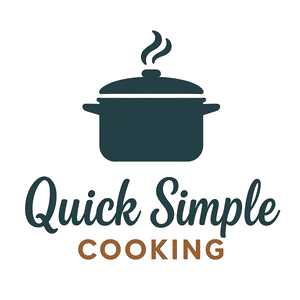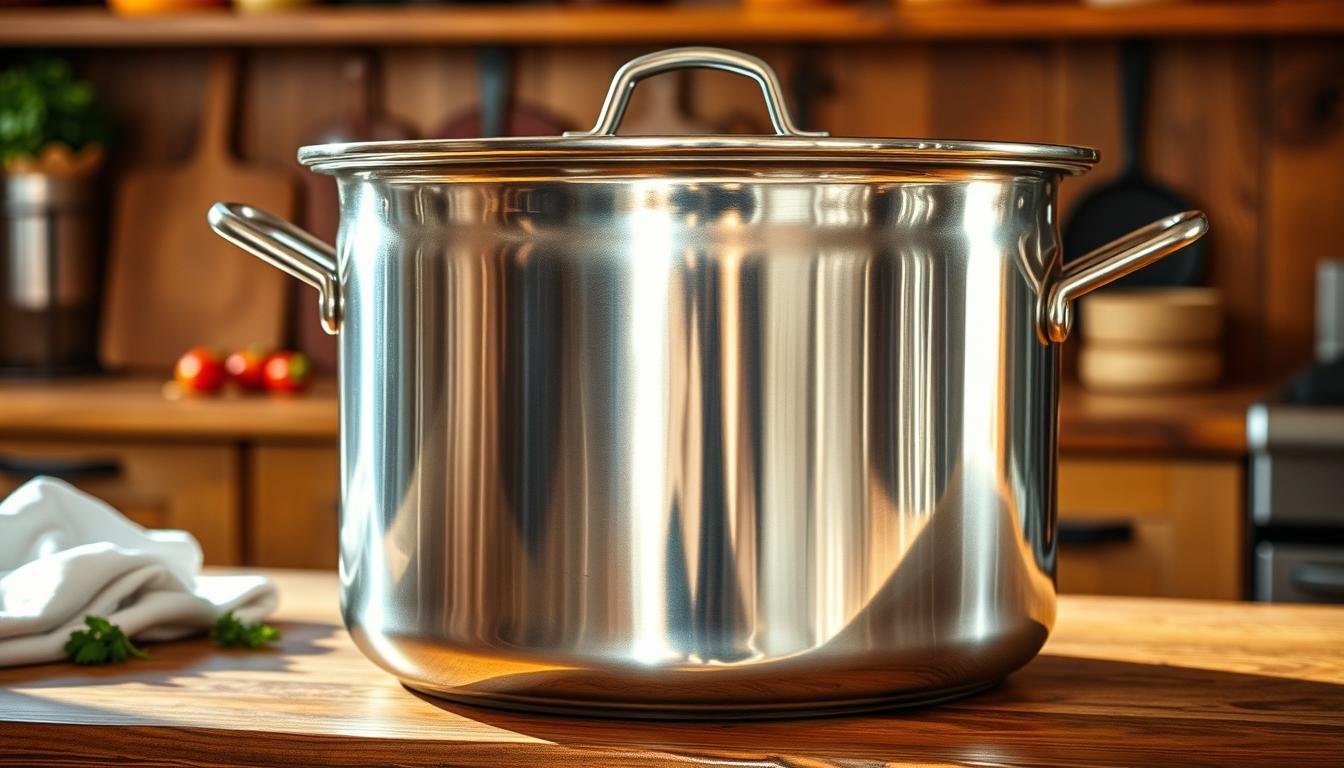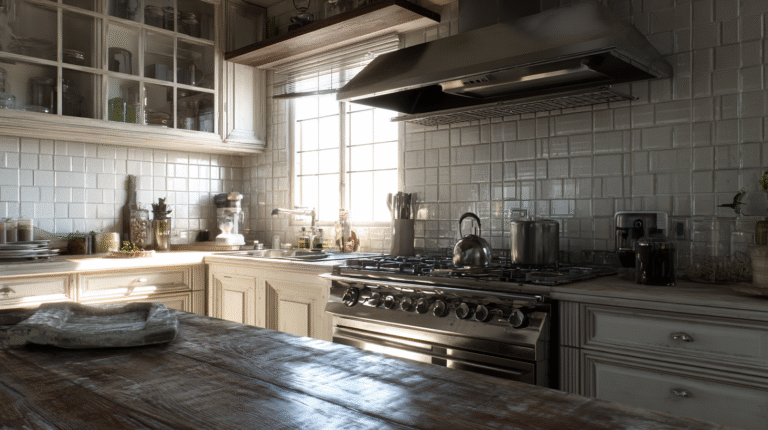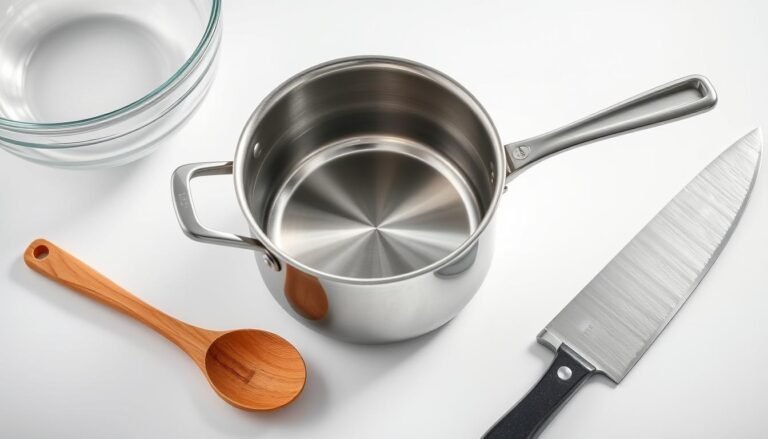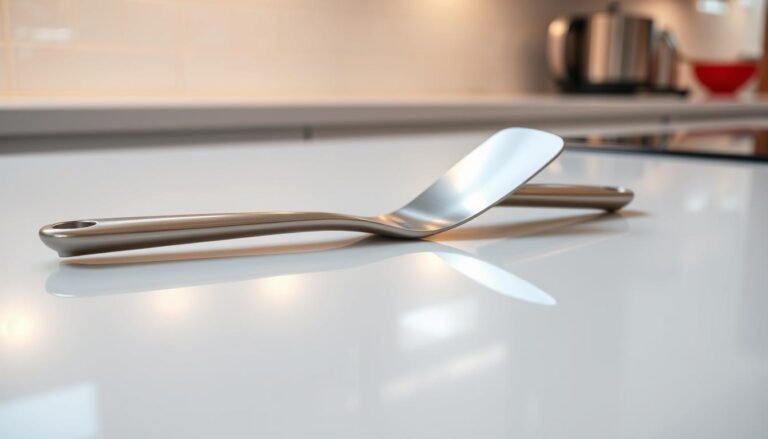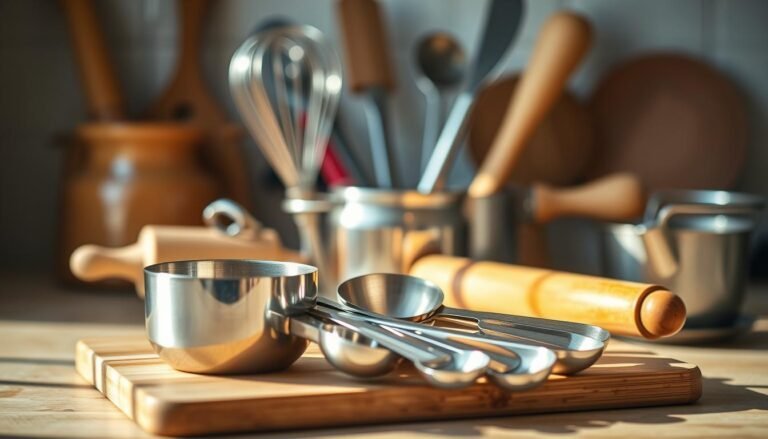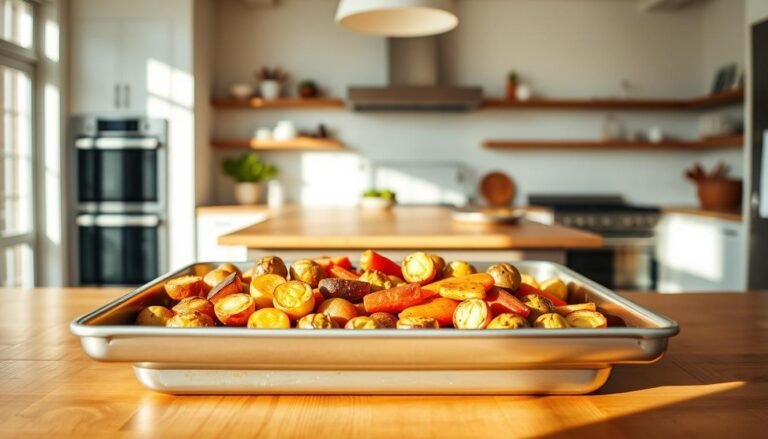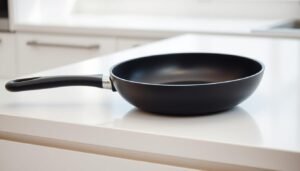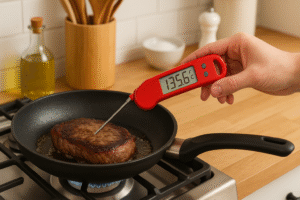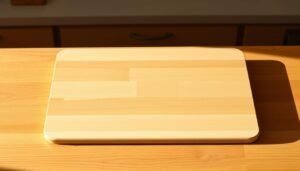Disclosure: This Post Contains Affiliate Links; We earn a commission on purchases.
A stock pot is key for any kitchen. It’s perfect for soups, stews, and big meals. Its use is wide, making it a must-have.
It’s great for simmering soups, steaming seafood, and boiling pasta. Both home cooks and chefs use it for big meals.
Key Takeaways
- A stock pot is a versatile tool for multiple cooking tasks.
- It’s essential for making soups, stews, and big batch meals.
- Ideal for both home cooks and professional chefs.
- Can be used for simmering, steaming, and boiling.
- A must-have piece of cookware in any kitchen.
What Makes a Stock Pot Different from Other Cookware
A stock pot is special because of its design and how it works. It’s big, tall, and heavy. This makes it perfect for cooking lots of food at once.
Defining Features and Design Elements
The design of a stock pot focuses on its function. Its tall sides hold a lot of food. The heavy bottom can handle high heat.
The handles are big and strong. This makes it easy to move the pot, even when it’s full.
The lid is key too. It fits tightly to keep moisture and heat in. This is great for cooking soups and stews, as it keeps flavors in.
Common Materials and Construction Methods
Stock pots are made from different materials. Stainless steel is popular because it’s durable and easy to clean. Aluminum is good for heat transfer. Copper is the best for heat but costs more.
How a stock pot is made can vary. Some are one piece, others are layered. Multi-ply construction improves heat and durability, making it a good choice for serious cooks.
The Many Uses of a Stock Pot in Everyday Cooking
A stock pot is more than just for stock. It’s great for many kitchen tasks. Its big size and design are perfect for cooking lots of food, boiling, steaming, and canning.
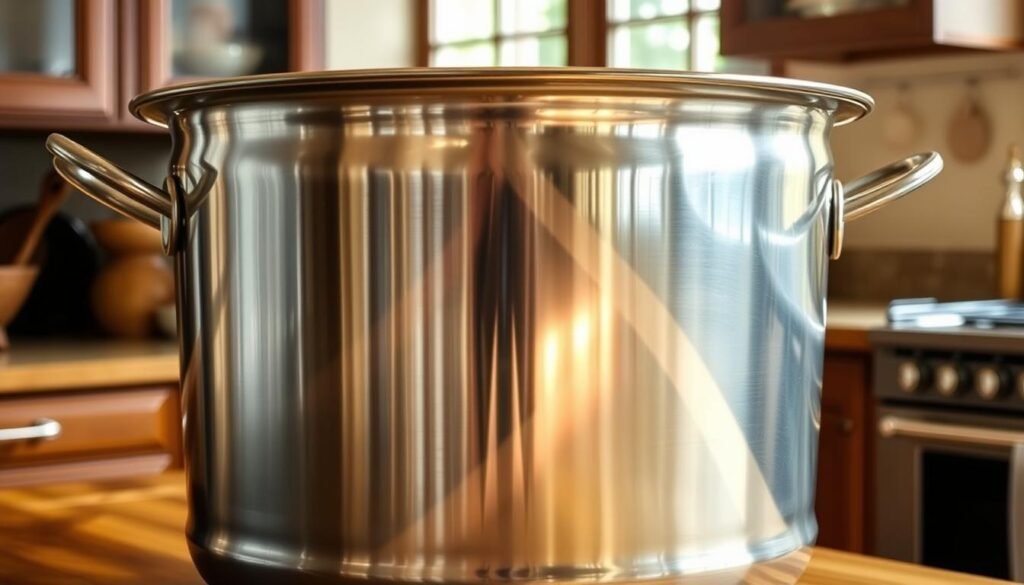
Creating Homemade Broths and Stocks
One key use of a stock pot is for homemade broths and stocks. Its large size lets you make big batches. These can last all week or be frozen for later.
This is great for those who love soups or use broth in many recipes.
Hearty Soups and Stews That Feed a Crowd
A large stock pot is ideal for big soups and stews. It’s perfect for family gatherings or big meals. You can make chili or other one-pot dishes too.
Pasta, Corn, and Seafood Boils
A stock pot is also good for cooking lots of pasta, boiling corn, or seafood boils. Its big inside lets you cook lots at once. It’s great for big family meals or parties.
Home Canning and Food Preservation
For home canning, a stock pot or Dutch oven works as a water bath canner. It’s key for safely keeping fruits, veggies, and meats. The pot’s size fits many jars, making canning easier.
In short, a stock pot is a must-have for any kitchen. It’s used for broths, soups, cooking lots of food, and canning. It’s perfect for home cooks and big entertainers alike.
Stock Pot vs. Other Cookware: Making the Right Choice
A stock pot is known for its size and versatility. But how does it compare to other kitchen essentials? Knowing the differences between a stock pot and other pots and pans is key.
Dutch Oven Comparison
A Dutch oven is often compared to a stock pot. They share similarities in construction and use. But, there are big differences.
Dutch ovens are more versatile. They can cook on the stovetop, in the oven, or over a campfire. They’re great for slow cooking, braising, and roasting. Stock pots, on the other hand, are better for cooking large amounts of food like soups and stews.
For a detailed comparison, visit this resource. It will help you understand their uses and benefits.
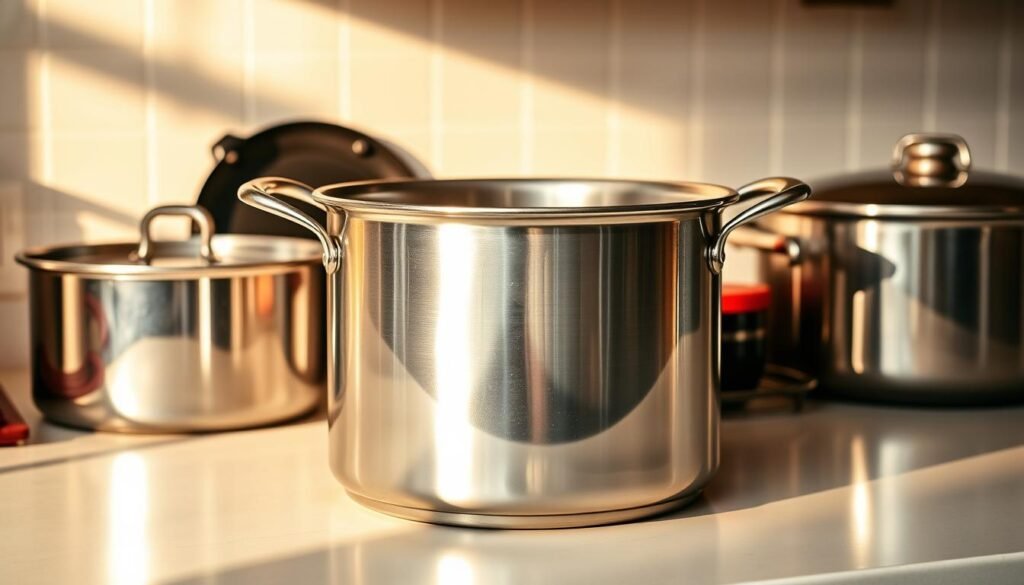
Sauce Pan Differences
A sauce pan is smaller and better for heating sauces and cooking veggies. Stock pots are larger and made for cooking in bulk. Choose a stock pot for big meals.
- Size: Stock pots are bigger, from 8 to 20 quarts.
- Versatility: Sauce pans are versatile for small meals and sides.
- Cooking Method: Both can be used on the stovetop, but stock pots are better for big, liquid dishes.
Slow Cooker Advantages
A slow cooker cooks food slowly at low temperatures. But, a stock pot cooks faster and can be used on the stovetop. Stock pots are better for quick boils or reductions.
- Cooking Speed: Stock pots cook faster.
- Stovetop Flexibility: Stock pots work on various stovetops, including induction.
- Immediate Results: Stock pots give quick results, like a fast boil.
Understanding the differences between a stock pot and other cookware helps you choose the right tool for your kitchen.
How to Choose the Perfect Stock Pot for Your Kitchen Needs
A stock pot is a key tool in the kitchen. You need to think about size, material, and features. Whether you’re a pro chef or a home cook, the right pot makes a big difference.
Size Considerations: From 8 to 20 Quarts
The size of your stock pot matters a lot. For small homes, an 8-quart stock pot works well for soups and stews. If you have a big family or cook a lot, go for a 12-quart or 20-quart stock pot.
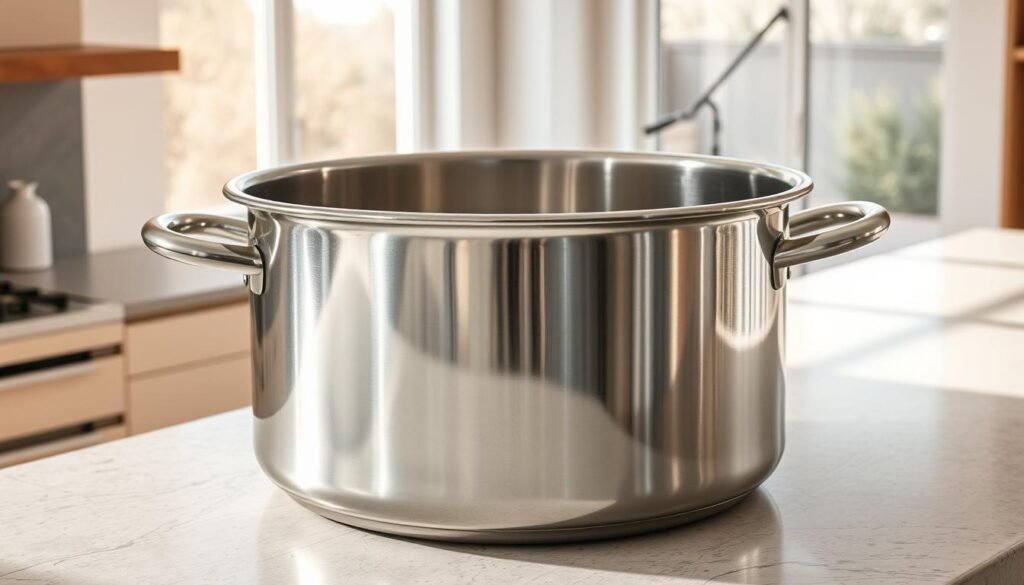
Material Options: Stainless Steel, Aluminum, and Copper
Stock pots come in different materials. Stainless steel pots are tough, don’t rust, and clean up easily. Aluminum pots are light and heat well but can react with acidic foods. Copper pots conduct heat great but are pricey and need care.
Essential Features: Handles, Lids, and Base Thickness
Look for useful features in your stock pot. Handles should be strong and easy to hold. A lid helps with certain cooking methods and keeps heat in. A thick base prevents scorching and cooks food evenly.
Maintenance and Care for Longevity
To keep your stock pot in good shape, clean it right. Don’t use harsh cleaners on stainless steel and other materials. Clean and dry it often to stop rust and bacteria. Follow the care guide for special pots like copper.
Conclusion: Why a Quality Stock Pot Is Worth the Investment
A quality stock pot is key in any kitchen. It’s versatile and durable, making it a great buy for both home cooks and chefs. It’s perfect for making soups, stews, or big meals.
Choosing a high-quality stock pot means getting a piece that lasts. It can handle lots of use and keeps working well. Kitchenware brands focus on making their pots last, using strong materials and methods.
For better cooking, a quality stock pot is a must. It’s not just about cooking a lot of food. It’s about cooking well. A good stock pot heats evenly, giving you consistent results.
In short, a stock pot is a must-have for a good kitchen. It’s versatile, durable, and makes cooking better. It’s a great addition to any kitchen.
FAQ
What is the ideal size for a stock pot?
The best size for a stock pot varies based on your cooking needs. Sizes range from 8 to 20 quarts. A big pot is great for making lots of soups or stews. A smaller one is better for smaller families.
What materials are stock pots typically made of?
Stock pots are usually made from stainless steel, aluminum, or copper. Stainless steel is popular because it’s durable and easy to clean. Aluminum and copper are also good, as they conduct heat well.
How do I choose the right stock pot for my kitchen?
Think about size, material, and features when picking a stock pot. Consider your cooking habits, how many you cook for, and how durable you need it to be.
Can I use a stock pot for canning?
Yes, you can use a stock pot for canning. Make sure it’s big enough for jars and has room for water to flow. A pot with a heavy bottom and straight sides works best for canning.
How do I maintain and care for my stock pot?
To keep your stock pot in good shape, don’t use harsh cleaners or scourers. Dry it well after washing to avoid water spots. For stainless steel pots, a little polish now and then can keep them looking new.
What’s the difference between a stock pot and a Dutch oven?
Stock pots are bigger and better for cooking large amounts of food. Dutch ovens are for braising and slow cooking. Dutch ovens are thicker and have tighter lids.
Can I use a stock pot on an induction cooktop?
It depends on the pot’s material. Stainless steel and cast iron work well on induction cooktops. Aluminum and copper might not. Always check the manufacturer’s info to be sure.

With over a decade of experience turning everyday ingredients into reliable, crowd-pleasing meals, Ryan knows firsthand the frustration of wasting time and effort in the kitchen. He specializes in clear, no-fuss guidance—breaking down techniques, time-saving tips, and smart shortcuts so that even complete beginners feel empowered and confident.
Subscribe to Our Newsletter
